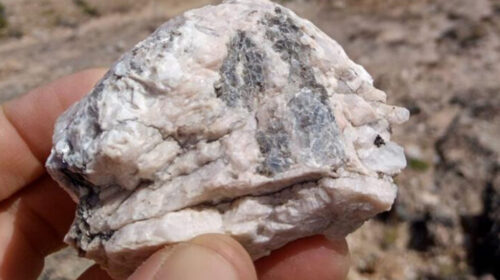THE POWER OF ELECTROLYTIC MANGANESE IN BATTERIES
Across the globe, electrolytic manganese plays a critical role in electrochemistry. Its use in modern alkaline, lithium, and sodium batteries offers immense cost and environmental benefits. However, some mining and industrial processing is required to ensure the electrolytic manganese is purified and suited for use in batteries.
Across the globe, electrolytic manganese plays a critical role in electrochemistry. Its use in modern alkaline, lithium, and sodium batteries offers immense cost and environmental benefits. However, some mining and industrial processing is required to ensure the electrolytic manganese is purified and suited for use in batteries.
Preparing Electrolytic Manganese for Use
According to Nick Dempers, Principal Process Engineer at SENET, a DRA Global Group Company, milling and leaching are the first steps in the process, followed by several possible purification steps.
Leaching
Leaching is a process used to selectively extract valuable metals from milled ore. For Electrolytic Manganese production, traditionally, calcination produces feed material for the leaching process. Alternatively, a roasting process is used to reduce the manganese in the milled ore, followed by a very mild sulphuric acid leach.
“Current trends commonly utilise a reductive leach process, using sulphur dioxide gas as reducing agent. Some have been known to use some novel reducing media in a sulphuric acid leach, like sugar and glucose,” confirms Dempers.
Purification
Once leaching is complete, purification involves either solvent extraction or selective precipitation of the impurities from the leach liquor. Once this has been achieved, Dempers confirms that one of three routes can be followed depending on the desired outcome:
- Electrowinning to produce Electrolytic Manganese Metal (EMM)
- Electrowinning to produced Electrolytic Manganese Dioxide (EMD)
- A crystallisation step to produce Manganese Sulphate (MnSO₄).
The Pros and Cons of EMM, EMD, and MnSO₄
- Manganese is a popular additive in steel manufacture. While Ferro manganese is commonly used, EMM can be used directly in steel and added into the smelting process without requiring additional modification prior to use. This makes it more cost effective and efficient.
- EMD is not as versatile and can only be used in battery grade products. This limits its applications.
- Similarly, MnSO₄ can only be used in batteries, and then it must be sufficiently purified to meet the battery grade specifications.
Why Use Manganese in Batteries?
“Manganese is ideal for use in batteries due to its natural ionic state. This gives it an enhanced capacity to hold and discharge electrons,” advises Dempers. “Because manganese is very cost effective (over 40 times cheaper than cobalt), it offers an affordable alternative for battery production.”
Manganese Driving Renewable, Affordable Energy
Traditionally, cobalt and nickel were used in battery production. Unfortunately, these are expensive metals with cobalt being the costliest metal currently employed in battery manufacture. As a result, manufacturers began substituting cobalt with nickel. Since manganese is even cheaper than nickel, it is now replacing nickel, at least partially, in battery production globally.
“Batteries are widely used to drive renewable, green energy for electricity storage and manganese has proven to be a critical component here,” adds Dempers.
South Africa’s Manganese Rich Soil
South Africa has the highest number of high-grade manganese deposits in the world. While processing of high-grade manganese ore dominates, some lower grade manganese bodies, which still contain a substantial 30 to 35% Mn, are also processed.
“As a result, we’re really well placed to produce electrolytic manganese from these feed stocks. Most producers are stockpiling what they call low grade manganese (below 35% Mn) This means no mining is required for its use, just crushing and milling, making for incredibly favourable processing economics,” concludes Dempers. “Demand for battery grade EMM is set to increase substantially in the near future and outstrip supply, making it a smart investment.”
82 total views , 1 views today





